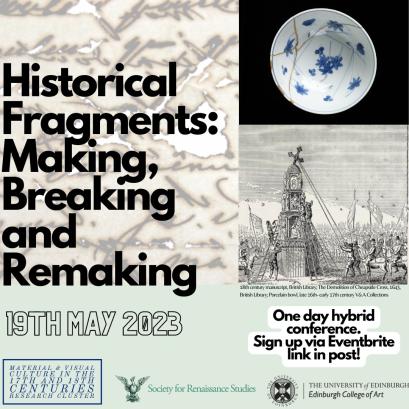
PhD student Hanne Schonkeren presents her paper Sustained splendor: (Re)assembling early modern luxury objects at a one-day hybrid event organized by the Material Culture in the Seventeenth and Eighteenth Centuries Research Cluster (University of Edinburgh).
Abstract of the presentation
In the sixteenth century, the city of Antwerp reached a commercial and artistic peak. Antwerp became Europe’s epicenter of goldsmithing, thanks to the direct supply of raw materials through its harbor and the presence of wealthy merchants and skilled craftsmen. Although the Golden Age of Antwerp is wellstudied, little research has been done on the art of goldsmithing, the making processes of these luxury objects, their makers, and the networks in which they circulated. This paper focuses on the assemblage methods of sixteenth-century Antwerp ornamental cups. The great intrinsic value of these objects is evidenced by their continuing use decades after their creation, rather than being melted down and reused for their material value. However, sometimes the function and owner(s) of the ornamental cup change over time, and methods were sought to slightly alter the cup to persist as a meaningful object. Typical for the Antwerp ornamental cups are the small figures, cast in precious metal, crowning the luxurious objects. Hands-on research demonstrated that these elements were assembled by means of screws, allowing the objects to be easily disassembled. As a result, the crowning figures on the silverware could be replaced to fit their new function. This enabled groups and individuals to take ownership of these ornamental cups and claim them as if they were made for themselves. This paper will explore the assemblage methods of Antwerp-made cups and trace how they moved and were modified to accommodate their social networks.
Place
The event takes place online (free) and in Edinburgh on 19 May, 2023.
More information on registration and the full program, here.
